Artist Beckie Kravetz presents a collection of figurative mixed media sculpture that captures the human essence. View more of her portfolio on her website.
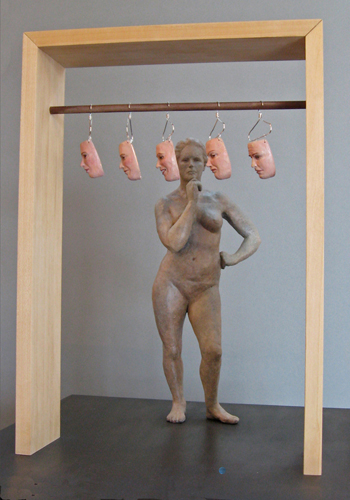
“The Closet” bronze, wood, sterling silver and mixed media, 20″ x 19″ x 20″
My career as a sculptor began not in an art studio, but on stage.
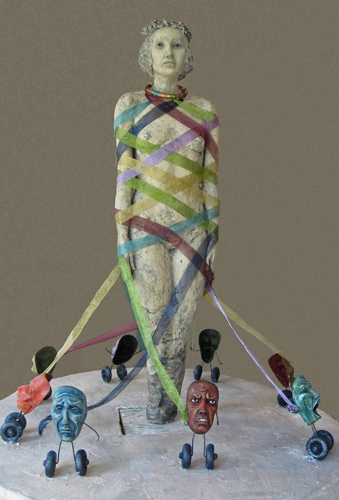
“Dismay Pole” paper clay, wire, ribbon, neoprene rubber, wood and wire masks, 28″ x 25″ x 25″
My early love was theater. Being more of a character actress than an ingénue, I learned to turn my young face into a variety of creatures and crones. My growing fascination with theatrical art soon surpassed my interest in acting. At the Yale School of Drama, I trained in prop-making, woodworking, metal work and scenic painting—but my passion was mask-making.
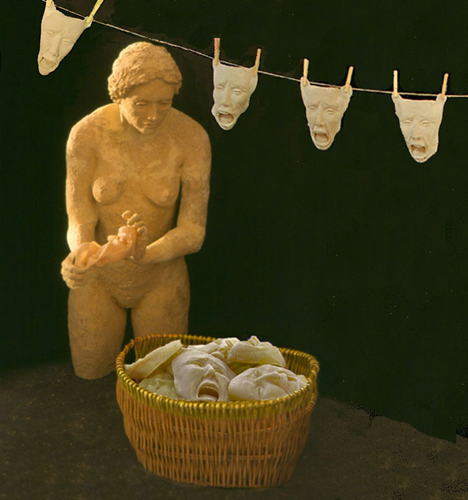
“All Wrung Out” stoneware, neoprene rubber and wicker, 41″ figure, 9″ masks
Sculpting human and animal faces to make molds for wearable masks was a complex and emotional undertaking which, combined with the inspiration of working with directors, designers and performers, resulted in magical transformations.
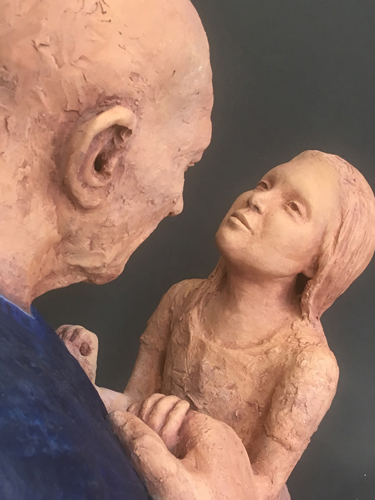
“Legacy” (detail), earthenware with underglaze and cold wax patina, 11″ x 13″ x 8″
During a mask-making job at Santa Fe Opera I learned that opera makeup artists essentially create masks on living faces, as singers are cast for their voices, not their appearance. A few months later, I joined the newly formed Los Angeles Opera, where for more than two decades I was the resident mask-maker and a principal wig and makeup artist.
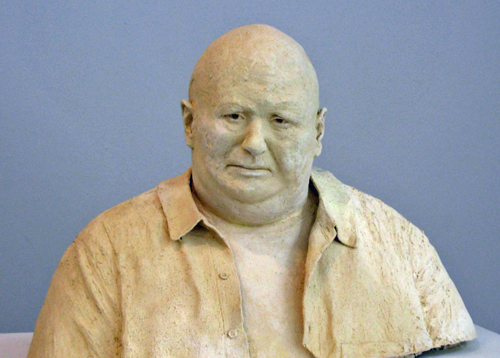
“Joe” stoneware, 27″ x 15″ x 18″
Often, I tell people that I learned to sculpt not from art classes or anatomy books, but through my fingertips, transforming the faces of scores of singers, including stars such as Sir Thomas Allen, Carol Vaness, Samuel Ramey and Plácido Domingo.
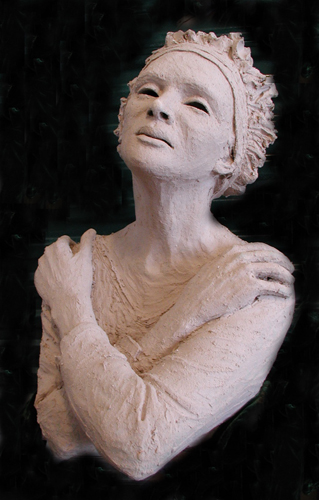
“Rapture Variations” stoneware, 20″ x 13″ x 12″
In Los Angeles, I also created masks for theater, television and film. In Italy, Guatemala and on a Fulbright fellowship to Spain, I studied traditional techniques with master mask-makers. Then, an Los Angeles gallery offered me a solo show of my masks as fine art—the first of many, it turned out, as my own artistic vision outside the collaborative world of performing arts was awakening.
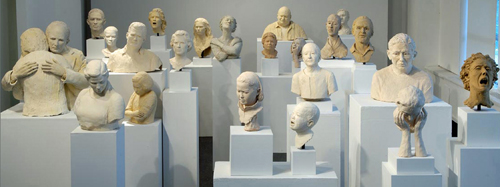
“Witness: an Installation” stoneware, paper clay, earthenware, clay paint, life-sized figures and heads
I had long been intrigued by the inner surface of the mask—the point of transformation between actor and character. Working in ceramic and bronze, adding paint and collage, I began turning the interior of masks into dioramas that consisted of tiny stage sets, illuminating the face’s identity or history.
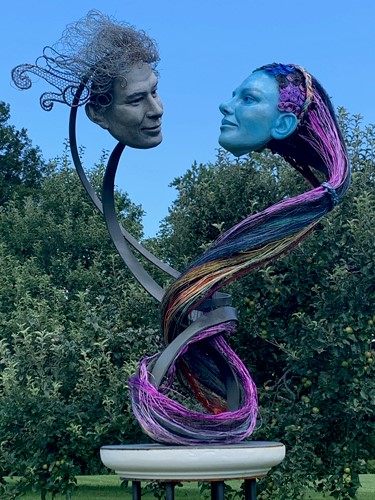
“Iris Wooed by Zephyrus” Aqua-Resin, yacht paint, steel, copper, aluminum wire, 37″ x 30″ x 30″ (with pedestal, 78″ tall)
My theatrical training had prepared me to work in a wide variety of materials—resin, fabric, synthetic rubber, wire and assorted mixed media. Whether I’m sculpting a theatrical character or a portrait commission, or simply some person or creature who has leapt from my subconscious, my subject’s real or imagined narrative helps me select the medium to portray them.
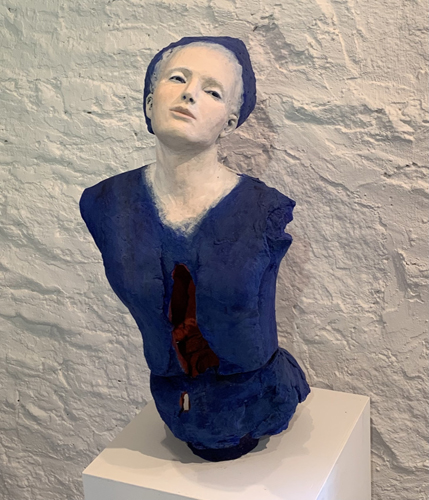
“Blue Girl” paper clay with underglaze and cold wax patina, 21″ x 7″ x 5.5″
As my masks evolved into heads, busts, full figures and gallery-wide installations, exploring what goes on “behind the scenes”—the roles we play both in public and private—has continued to permeate my work. After my years of designing for the opera, I can’t help but think of my sculptures as music, creating visual arias, duets, and choruses, exploring the dissonances and harmonies of life. I often position two or more, sometimes, many, sculpted figures together. Like scenes on a stage, they invite viewers to witness their interactions, their emotions, their solitude.
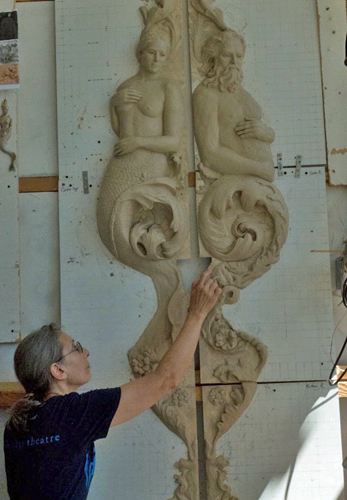
Artist Beckie Kravetz sculpting an architectural commission
I work hard to get their eyes exactly right. My sculptures implore you to look into them with your own.
Artist Beckie Kravetz invites you to follow her on Facebook and Instagram.


Speak Your Mind